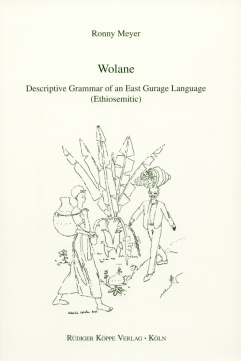
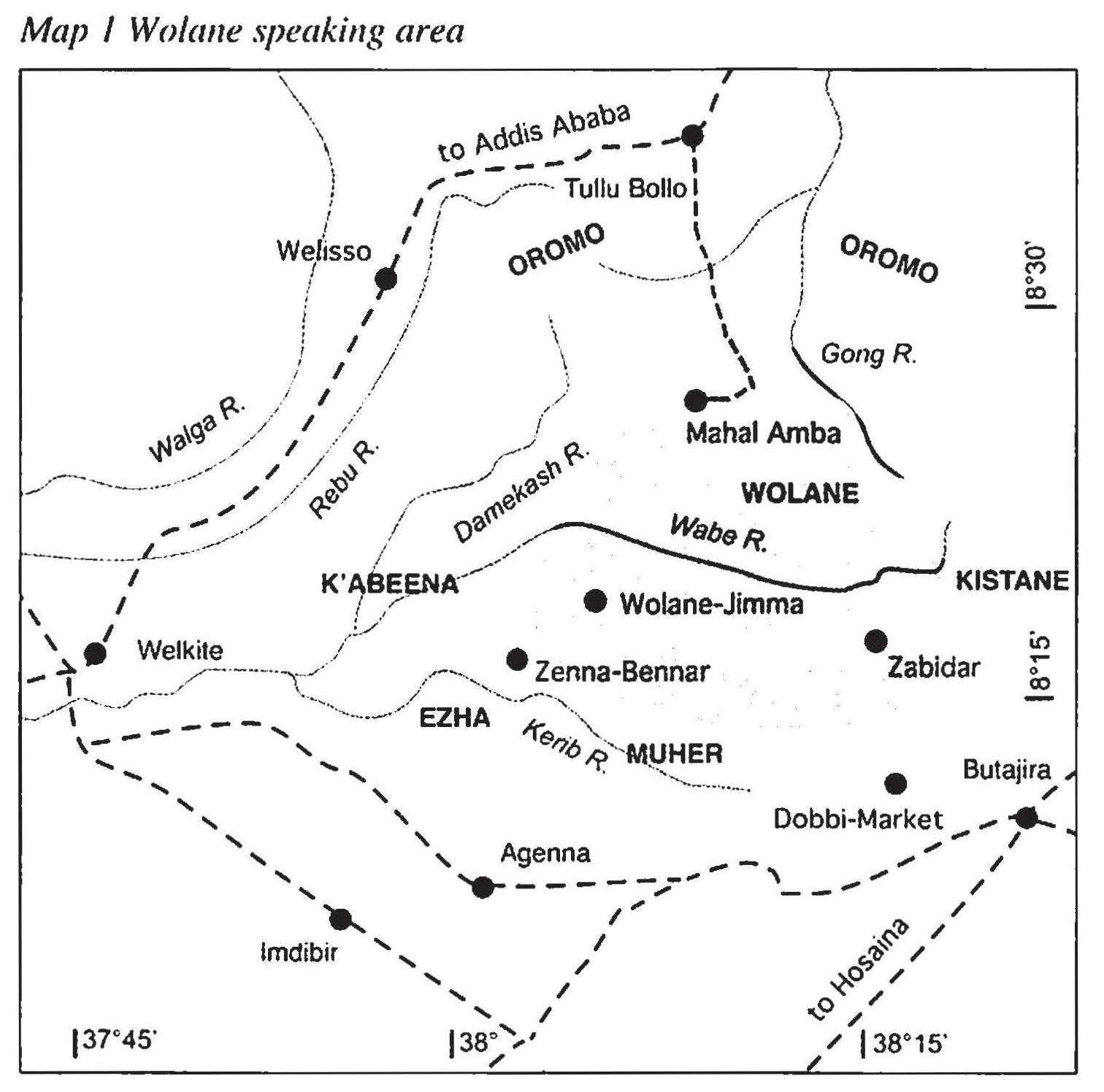
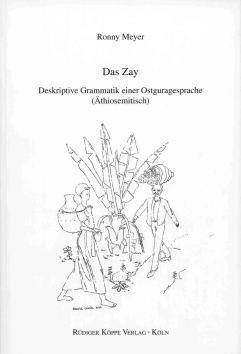
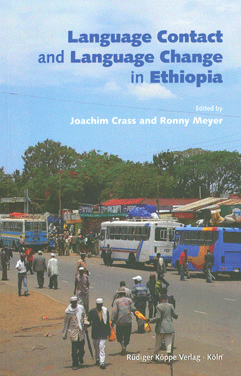
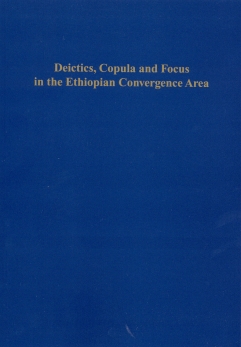
Wolane
Descriptive Grammar of an East Gurage Language (Ethiosemitic)
Author: Ronny Meyer. Series edited by: Wilhelm J.G. Möhlig †, Bernd Heine.
Series: GA Grammatical Analyses of African Languages Volume 31
2006340 pp.
1 map, 12 drawings, 44 tables, numerous charts
Text language(s): English
Format: 160 x 240 mm
620 g
Paperback
€ 69.80
Buy 'Wolane' as a downloadable PDF document directly from our online shop »
Order 'Wolane' as print edition »
Wolane is an Ethiosemitic language, belonging to the East Gurage group within the Eastern branch of Transversal South-Ethiosemitic. The people live approx. 160 km south of the Ethiopian capital Addis Ababa at the north-eastern edge of the Gurage zone. Besides this Wolane-speaking area, a considerable number of Wolane live in Addis Ababa, earning their livelihood as merchants. The majority of the territory proper lies above 2,300 m and is very suitable for the cultivation of ensete edulis (false banana). In addition the Wolane – who use this ethnonym for themselves and their living area, too – are cattle-breeders. The totalling number of speakers is estimated to be about 70,000, whereas almost all Wolane below the age of 30 are multilingual, mostly using Amharic as a second language at work, in the administration and as the means of instruction in primary education, but also Oromo or other neighbouring languages.
The Wolane varieties of these various multilingual groups may differ from the variety discribed in this grammar. The East Gurage languages share a characteristic bundle of features like the reduction of gemination in the verbal domain, a nasal trace of lost initial laryngeals, or the loss of gender distinction in the plural, which indeed occur in Wolane, too, and are dicussed in the three main chapters of the present grammar.
After detailed analyses of the phonology, morphology, and syntax of Wolane – which is not a written language till now – the book is completed by language examples, greetings and wishes, an animal tale, and a construction manual for a Wolane house.
Under these links you will find publications of the author and descriptions of further Ethiosemitic languages:
Accompanying material:
- APAL Annual Publication in African Linguistics
(ISBN 978-3-89645-501-7 ) - APAL Annual Publication in African Linguistics
(ISBN 978-3-89645-503-1 ) - Das Argobba
(ISBN 978-3-89645-554-3 ) - Das Zay
(ISBN 978-3-89645-541-3 ) - Deictics, Copula, and Focus in the Ethiopian Convergence Area
(ISBN 978-3-89645-293-1 ) - Encoding Motion – Case Studies from Africa
(ISBN 978-3-89645-505-5 ) - Language Contact and Language Change in Ethiopia
(ISBN 978-3-89645-258-0 ) - Oromo Oral Poetry Seen from Within
(ISBN 978-3-89645-276-4 )
Cross-reference:
- 5000 Jahre semitohamitische Sprachen in Asien und Afrika
(ISBN 978-3-89645-686-1 ) - Converbs, Medial Verbs, Clause Chaining and Related Issues
(ISBN 978-3-89645-719-6 ) - Die Verbalsysteme des Amharischen und Tigrinischen
(ISBN 978-3-89645-687-8 ) - Multidisciplinary Views on the Horn of Africa
(ISBN 978-3-89645-683-0 ) - Tigrinya–English/Amharic Codeswitching
(ISBN 978-3-89645-997-8 )
Reviews
David Appleyard in Aethiopica, 11/2008, 269-271
[...] let me state at the outset that in these two volumes on Zay and Wolane, we have the best and most complete grammatical studies of any Gurage language to date. It is probably not an exaggeration to go further and say that these offer the most complete descriptions of any modern Ethiopian language outside of Amharic. [...]
With these two volumes, Meyer has made a very valuable and sizeable contribution to the field of Ethiopian Semitic studies, to the field of Semitics in general, and to the field of linguistics in general. There are many interesting phenomena to be found within these volumes, some of which have yet to be explained. An example would be the definite articles of Zay and Wolane, which seems to correspond to the 3ms verbal object suffix. It is hoped that Meyer and others will continue to tackle those other Ethiopian Semitic languages that still await adequate description.
Aaron Rubin in Journal of Semitic Studies, 57/1, 2012, 186-189
| « back | Print version | [top] |
 Books
Books Audio
Audio Biographies
Biographies Series
Series Festschrifts
Festschrifts Journals
Journals